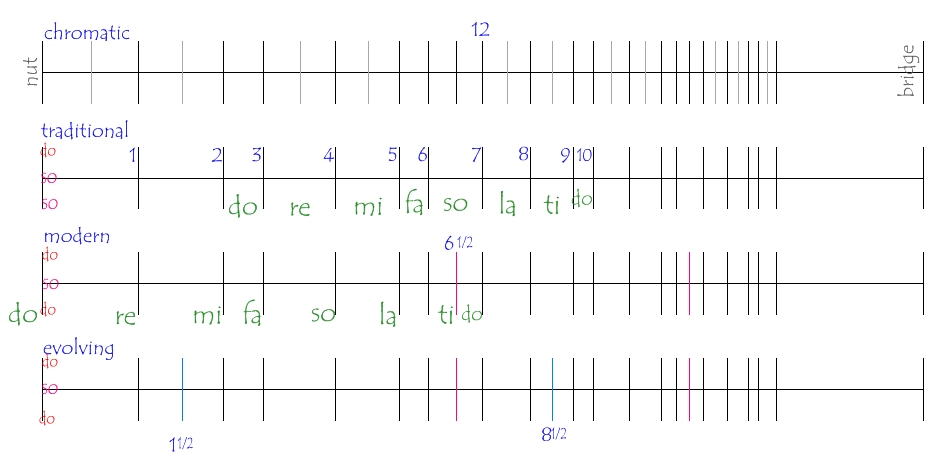
Here are some sketches of different fret patterns.

The top one is your familiar chromatic pattern found on all guitars & banjos etc.
The next shows the most traditional of dulcimer fret patterns, not all that common today.
The common tuning would be the tonic “do” on the bass string and the middle and melody strings both tuned to “so” or 1 - 5- 5
or C-G-G or D-A-A and so on. The start of your diatonic scale would be on the 3rd fret and go up to the 10th not skipping any frets.
Early dulcimers didn’t have frets, but staples under the melody string. The other strings just droned. Starting the scale on the 3rd fret was helpful, for you still had a few notes lower on that string… helpful, since you couldn’t fret the middle string to get lower notes.
The next shows an extra “6 ½” fret that started to appear maybe in the 40s? No one’s really sure. This is the most common pattern found on dulcimers today. The most common tuning for this is “Do, so, do” or 1-5-1 or C-G-c or D-A-d etc. All the different ways of describing the same tuning pattern.
The scale starts on the open string and goes up to the 7th fret now skipping the 6th fret. If you were to play the 6 fret you’d be playing in the Mixolydian mode or the “Ol’ Joe Clark” mode. Play fret numbers 4, 5, 6, 5, 4, 3, 2 and you’ll hear the start of that old fiddle tune.
Dulcimers are modal instruments. Modes are just patterns of whole and half steps. If you play from C to C on the white keys of the piano you get the major or do re mi scale. It is also the Ionian scale. If you play from A to A you’ll get a minor sounding key in Modal speak is called the Aeolian scale. From G to G (remember only the white keys) you get the Mixolydian scale.
The last pattern shows the 1 ½ fret, a much more recent innovation on dulcimers. It allows for some nice blues notes and when in the most common D-A-d tuning you can easily play a C chord and an F chord making jamming with chromatic instruments much easier.
David